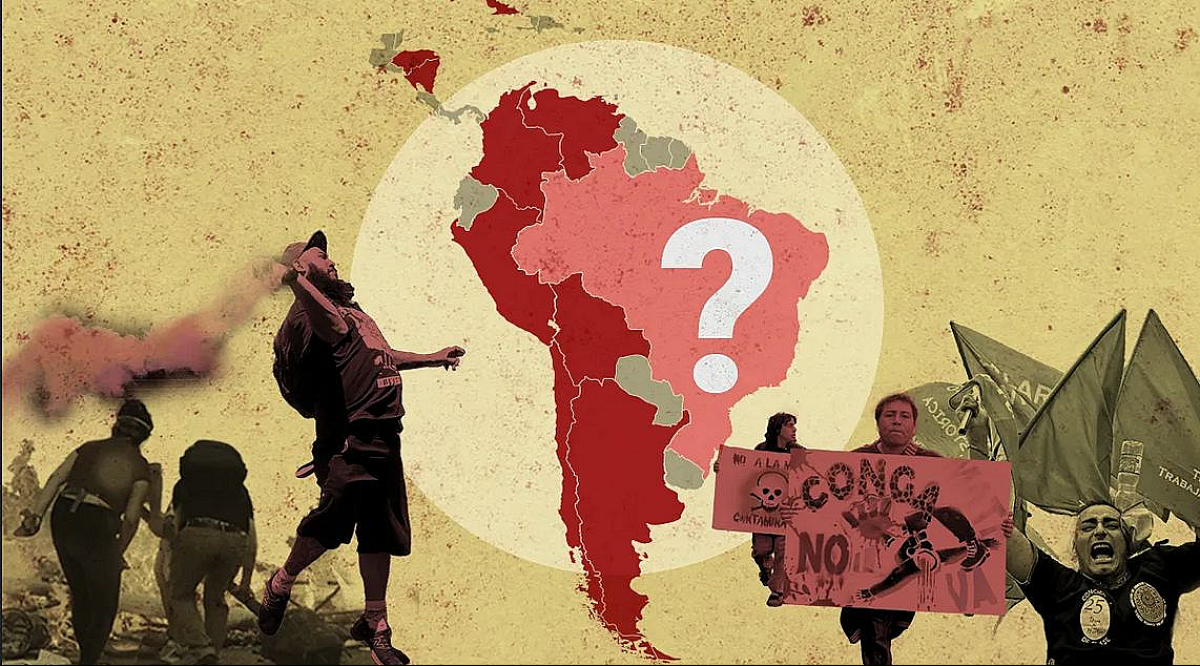 102
102
Leftism was the dominant political ideology in Latin America, particularly during the Cold War, in opposition to US imperialism.
Fidel Castro’s revolution in Cuba, the election of Salvador Allende in Chile in 1970, and the rise of the Sandinistas to power in Nicaragua in 1979 are landmark events of the era.
During the 2000s, the world witnessed the reemergence of leftist governments in Latin America through a succession of election victories by the late Hugo Chávez in Venezuela, Lula da Silva in Brazil, Néstor Kirchner in Argentina, Michelle Bachelet in Chile, Tabare Vázquez in Uruguay, Fernando Lugo in Paraguay, Evo Morales in Bolivia, and Rafael Correa in Ecuador.
This recent shift towards left-leaning governments has been dubbed the “Pink Tide.” However, the US’ malign interference has never ceased from the 1973 Chilean infamous coup d’état to the present day.
Throughout the 2010s, a string of right-wing and conservative administrations rose to power under the slogans of combating corruption and moralism.
Nevertheless, the left reclaimed victory in Latin American nations again.
In 2018, the overwhelming victory of Andrés Manuel López Obrador in Mexico marked the first pivotal moment in Latin America’s political tilt to the left over the last decade.
The following year, Panamanians elected a centre-left administration, while the Peronist movement in Argentina made a stunning comeback to politics with Alberto Fernández’s landslide.
In 2020, Marxist economist Luis Arce defeated his conservative opponents and was elected president of Bolivia. He vowed to continue the socialist policies of his predecessor, Evo Morales, who was removed by the right-wing interim president, Jeanine Áñez, following a 2019 US-backed coup.
In April 2021, Pedro Castillo, an obscure rural teacher, overcame his right-wing opponent to become the Peruvian president.
Xiomara Castro, a socialist female candidate, achieved a surprising victory in Honduras in November 2021, ending the right-wing party’s 12-year reign.
In December 2021, the Chileans elected Gabriel Boric, a former left-leaning student activist. Ultimately, in June 2022, Gustavo Petro’s election as Colombia’s first left-wing president elevated the new ‘Pink Tide’ to its apogée in South America since Washington’s puppets had been at the helm of politics in Colombia for many years.
The catastrophic mishandling of right-wing administrations during the COVID-19 crisis has been one of the most salient factors in altering the political landscape of Latin America.
The rampant poverty and rising unemployment caused by the gross mismanagement of right-wing politicians have led voters to support candidates who promise greater welfare support.
The outbreak has killed about 1.65 million people in Latin American nations. More than 660,000 of these fatalities have occurred in Brazil.
Brazilians condemn their incumbent, Jair Bolsonaro, for downplaying the pandemic threat, obstructing national vaccination, and concealing the actual death toll.
Along with large social protests against injustice, corruption, and poverty, the same grievances have been voiced in Peru, Chile, and Colombia, laying the groundwork for the left’s comeback.
Furthermore, more than 26 million jobs have been lost in South American nations since the onset of the epidemic, and the number of people living in severe poverty and food insecurity has risen by over 13.8 million.
The blight of the horrible policies of Nayib Bukele in El Salvador and Jair Bolsonaro in Brazil are striking examples of right-wing populism’s failure.
By undermining democratic institutions and undermining social rights, Bukele and Bolsonaro, who ascended to power on the backs of demagogic slogans, have plunged their nations into deep socio-economic turmoil.
The rise of left-leaning administrations in this area would likely result in the increasing influence of China and Russia in Washington’s erstwhile backyard, causing the United States to become more anxious.
The American media cannot hide its dread of the rising Pink Tide. In an article, The Economist wrote, “…the risk is not just that democracies devolve into dictatorships, but that Latin America drifts away from the orbit of the West.”
Due to its abundant natural resources and access to an extensive range of minerals such as lithium and copper for the move to green energy, Latin America is a significant food and material exporter. Therefore, with Lula’s looming victory and charismatic personality, the unity of South America’s five largest economies in Latin America, Brazil, Mexico, Argentina, Colombia, and Chile, against the United States is closer than ever.
Comment
Post a comment for this article